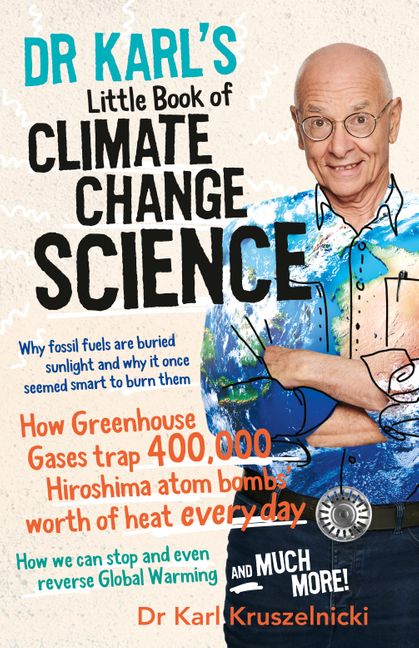Global Warming and Sustainable Development Goals (SDGs)
Overview of Global Warming
Global warming refers to the phenomenon of increasing average air temperatures near the Earth’s surface over the past one to two centuries. Since the mid-20th century, climate scientists have gathered detailed observations of weather phenomena such as temperatures, precipitation, and storms, as well as related influences on climate including ocean currents and atmospheric chemical composition. These data indicate that Earth’s climate has changed over almost every conceivable timescale since geologic time began. Human activities, especially since the Industrial Revolution, have increasingly influenced the pace and extent of present-day climate change.
Scientific Consensus and the Role of the IPCC
The Intergovernmental Panel on Climate Change (IPCC), established in 1988 by the World Meteorological Organization (WMO) and the United Nations Environment Programme (UNEP), represents the scientific community’s consensus on climate change. The IPCC’s Sixth Assessment Report (AR6) published in 2021 estimated that global average surface temperature increased by approximately 1.07 °C between 1850 and 2019. A 2018 special report highlighted that human activities have caused a temperature increase between 0.8 and 1.2 °C since preindustrial times, with most warming in the latter half of the 20th century attributable to human influence.
Climate Projections and Emission Scenarios
AR6 presented climate predictions based on five greenhouse gas emission scenarios, considering future emissions, mitigation efforts, and uncertainties such as feedback processes and aerosol impacts. The scenarios include:
- Lowest-emissions scenario: Assumes steep cuts in emissions from 2015, predicting a temperature increase of 1.0 to 1.8 °C by 2100 relative to 1850–1900.
- Intermediate-emissions scenario: Assumes emissions stabilize by 2050 then decline, projecting a 2.1 to 3.5 °C increase by 2100.
- Highest-emissions scenario: Assumes continued emission increases, forecasting a 3.3 to 5.7 °C rise by 2100.
Implications for Sustainable Development Goals
Exceeding a 2 °C increase in global temperature is expected to cause significant societal, economic, and ecological damage, including:
- Increased extinction of plant and animal species (SDG 15: Life on Land)
- Shifts in agricultural patterns affecting food security (SDG 2: Zero Hunger)
- Rising sea levels threatening coastal communities (SDG 11: Sustainable Cities and Communities)
In response, nearly all national governments have initiated carbon reduction plans under the Paris Agreement, aiming to limit warming to 1.5 °C above preindustrial levels to avoid severe impacts (SDG 13: Climate Action).
Current Status and Future Risks
- The 2018 IPCC report projected reaching the 1.5 °C threshold between 2030 and 2052 if emissions continue unabated.
- The AR6 report suggests this threshold could be reached by 2041 at the latest.
- Global climate monitoring data for 2024 indicates a temperature 1.6 °C above preindustrial levels, signaling an urgent need for accelerated climate action.
Sea Level Rise and Environmental Impact
The AR6 report also documented a global average sea level rise of approximately 20 cm between 1901 and 2018, with acceleration in the latter half of the 20th century. Projections for 2100 vary by emission scenario:
- Lowest-emission scenario: 28–55 cm rise
- Intermediate scenario: 44–76 cm rise
- Highest-emission scenario: 63–101 cm rise
Rising sea levels pose risks to coastal ecosystems and human settlements, impacting SDG 14 (Life Below Water) and SDG 11 (Sustainable Cities and Communities).
Greenhouse Gases and the Enhanced Greenhouse Effect
Global warming is primarily driven by increased concentrations of greenhouse gases (GHGs) such as carbon dioxide (CO₂), methane (CH₄), and nitrous oxides (N₂O), released mainly through fossil fuel combustion for industry, transportation, and residential use. The enhanced greenhouse effect results in warming of Earth’s surface and lower atmosphere.
- In 2014, the IPCC reported that atmospheric concentrations of CO₂, CH₄, and N₂O surpassed levels found in ice cores dating back 800,000 years.
- CO₂ concentration rose from approximately 280 parts per million (ppm) in the mid-18th century to 419 ppm by the end of 2022.
- If current fossil fuel usage continues, CO₂ levels are projected to reach 550 ppm by mid-21st century, effectively doubling preindustrial concentrations.
Ongoing Debate and the Need for Action
A vigorous debate continues regarding the extent and seriousness of rising temperatures, their effects on human life, and the urgency of mitigation and adaptation strategies. Addressing global warming aligns directly with multiple Sustainable Development Goals, particularly:
- SDG 7: Affordable and Clean Energy – promoting renewable energy to reduce fossil fuel dependence.
- SDG 9: Industry, Innovation, and Infrastructure – fostering sustainable industrialization.
- SDG 12: Responsible Consumption and Production – encouraging sustainable resource use.
- SDG 13: Climate Action – implementing policies to combat climate change and its impacts.
Conclusion
Scientific evidence confirms that human activities have significantly contributed to global warming, with profound implications for ecosystems, economies, and societies worldwide. Achieving the Sustainable Development Goals requires urgent, coordinated global efforts to reduce greenhouse gas emissions, adapt to climate impacts, and promote sustainable development pathways.
1. Sustainable Development Goals (SDGs) Addressed or Connected
- SDG 13: Climate Action
- The article focuses extensively on global warming, climate change, greenhouse gas emissions, and their impacts, which are directly related to SDG 13.
- SDG 14: Life Below Water
- Rising sea levels and their ecological impacts mentioned in the article relate to the conservation and sustainable use of oceans and marine resources.
- SDG 15: Life on Land
- Extinction of plant and animal species and shifts in agriculture patterns are connected to the protection, restoration, and promotion of sustainable use of terrestrial ecosystems.
- SDG 7: Affordable and Clean Energy
- The article discusses the burning of fossil fuels as a major source of greenhouse gases, implying the need for clean energy solutions.
- SDG 12: Responsible Consumption and Production
- References to industrial pollutants and fossil fuel consumption highlight the importance of sustainable consumption and production patterns.
2. Specific Targets Under Those SDGs Identified
- SDG 13: Climate Action
- Target 13.1: Strengthen resilience and adaptive capacity to climate-related hazards and natural disasters.
- Target 13.2: Integrate climate change measures into national policies, strategies, and planning.
- Target 13.3: Improve education, awareness-raising and human and institutional capacity on climate change mitigation, adaptation, impact reduction, and early warning.
- SDG 14: Life Below Water
- Target 14.2: Sustainably manage and protect marine and coastal ecosystems to avoid significant adverse impacts.
- SDG 15: Life on Land
- Target 15.5: Take urgent and significant action to reduce the degradation of natural habitats, halt the loss of biodiversity, and protect endangered species.
- SDG 7: Affordable and Clean Energy
- Target 7.2: Increase substantially the share of renewable energy in the global energy mix.
- SDG 12: Responsible Consumption and Production
- Target 12.2: Achieve the sustainable management and efficient use of natural resources.
3. Indicators Mentioned or Implied to Measure Progress
- Global Average Surface Temperature Increase
- Measured increase in global average temperature since preindustrial times (e.g., 1.07 °C increase between 1850 and 2019, 1.6 °C in 2024).
- Used to track progress towards limiting warming to 1.5 °C as per the Paris Agreement.
- Greenhouse Gas Concentrations
- Atmospheric concentrations of carbon dioxide, methane, and nitrous oxides (e.g., CO2 levels rising from 280 ppm in the mid-18th century to 419 ppm in 2022).
- Indicator of human impact on climate and progress in emission reduction.
- Sea Level Rise
- Measured sea level rise (e.g., 20 cm between 1901 and 2018, projections up to 101 cm by 2100 depending on emissions scenarios).
- Indicator of climate change impacts on marine and coastal ecosystems.
- Emission Scenarios and Projections
- Modeling of greenhouse gas emission scenarios (low, intermediate, high) to predict temperature and sea level changes.
- Used to assess effectiveness of mitigation measures and policy impacts.
- Species Extinction and Agricultural Shifts
- Implied indicators related to biodiversity loss and changes in agricultural productivity due to climate change.
4. Table of SDGs, Targets, and Indicators
| SDGs | Targets | Indicators |
|---|---|---|
| SDG 13: Climate Action |
|
|
| SDG 14: Life Below Water |
|
|
| SDG 15: Life on Land |
|
|
| SDG 7: Affordable and Clean Energy |
|
|
| SDG 12: Responsible Consumption and Production |
|
|
Source: britannica.com






